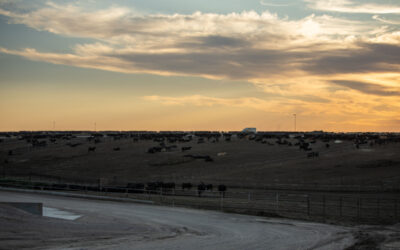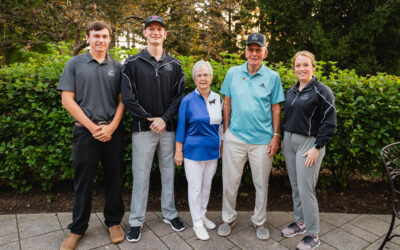
Making Sense of Supply, Pricing and Navigating the Market
by Briley Richard, freelance writer
April 7, 2025
Amid anticipated shifts in cattle supply and evolving market dynamics, Certified Angus Beef (CAB) remains well-positioned to navigate the beef sales road ahead. At the recent CAB Foodservice Leaders Summit, Clint Walenciak, vice president of product services for CAB, addressed how producer profitability, strategic specification adjustments, and resilient demand will help stabilize the brand’s beef supply chain through herd size and pricing shifts in 2025 and beyond.
“When we think about the components of demand that are in our favor in a big way, supply conditions, and how we’re going to change, adjust and remain relevant, there’s no reason to hit the panic button,” Walenciak said.
Over the past two years, the market braced for a decline in fed cattle harvest, driven by the shrinking size of the nation’s cow herd. In 2025, analysts project that the fed cattle harvest will decline by 3%, or roughly 700,000 head, with further reductions anticipated in 2026.
“When we think about the factors needed to increase numbers in our total herd population, one of the main elements is profitability,” Walenciak explained.

Caption: While the current cattle supply dynamics offer challenges for multiple segments of the beef supply chain, Clint Walenciak shared optimism with CAB partners for the demand of high-quality, premium beef.
Awaiting the anticipated increase in cow herd numbers, Walenciak predicted a 4%, or approximately 250,000 head, reduction in the availability of CAB® carcasses this year. The recent shift in the ribeye area specification, from 10- to 16-square inches to 10- to 17-square inches, offers an opportunity to close the supply—and profitability—gap and further increase CAB relevance.
“Not just maintaining relevance to the box, or relevance to a restaurant, end user and so forth,” Walenciak said, “but relevance all the way up the supply chain to the feeders and the cow-calf operations that raise the high-quality fed cattle that qualify for the brand.”
Markets continue to trend toward a philosophy of more carcass pounds, more product, more profit. As carcass weights have increased, they have simultaneously caused the carcass quality to trend up as well. Despite carcass specifications still in play, the net effect proves beneficial.
“The positive side of that is as we feed cattle longer, they tend to grade better,” he said. “These heavier cattle mean more pounds of meat going out into the market.”
Potential supply impacts stem from packer procurement prices relative to their earning potential. Their business management decisions directly influence the volume of cattle processed.
“It’s a pure result of packers trying to manage their business as opposed to the fundamental number of cattle,” Walenciak said. “That’s something we’re going to have to be prepared for as much as anything else: what those production hours and production volumes at the packing plant will look like over the next couple of years.”
Since 2020, the premium spread between CAB® and USDA Choice steadily increased to $19 per hundredweight. All while boxed beef cutout values for CAB are nearing $3.50. This growth signals the steady demand to sell more CAB®, sell it at a higher price, or even, a combination of the two.
“Demand is extremely stable and it’s exciting to see it hold where it’s at, even as we come out of 2024 and think about what 2025 holds for us,” Walenciak said optimistically.
You may also like
Every Issue Has Its Moment
Progress happens when people are at the table, engaged and committed to action. With a vested interest in the industry’s future, CAB is leaning in on conversations surrounding evolutions in meat science.
Colvin Scholarships for Food and Agriculture Students
Investing in the future of the beef industry, Certified Angus Beef will award $100,000 to college students passionate about food and agriculture from the Colvin Scholarship Fund. Applications are across three categories and open through April 14.
Thriving with Shrinking Supply
Even as the nation’s cow herd contracts, “more pounds” and “higher quality” have been common themes. Specific to commercial cattlemen: It still pays to focus on carcass merit, in addition to other economically relevant traits.



